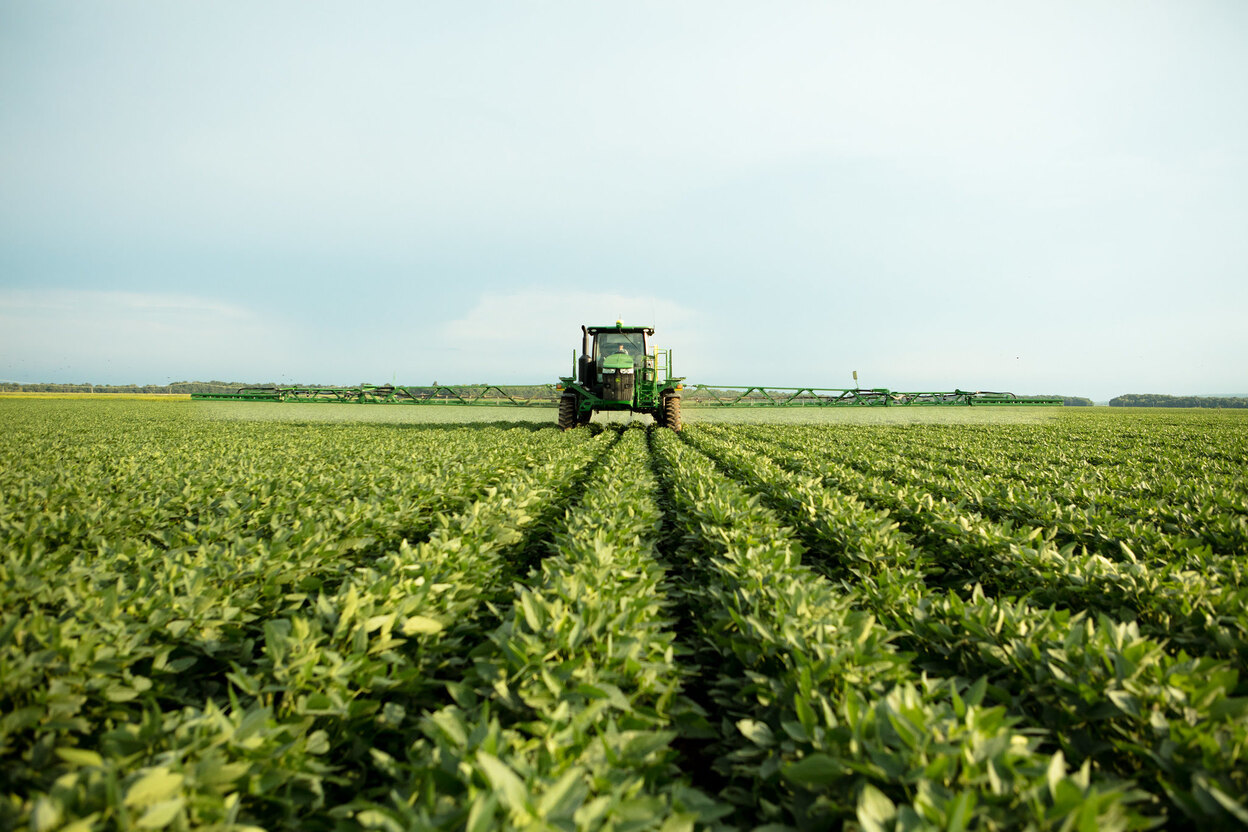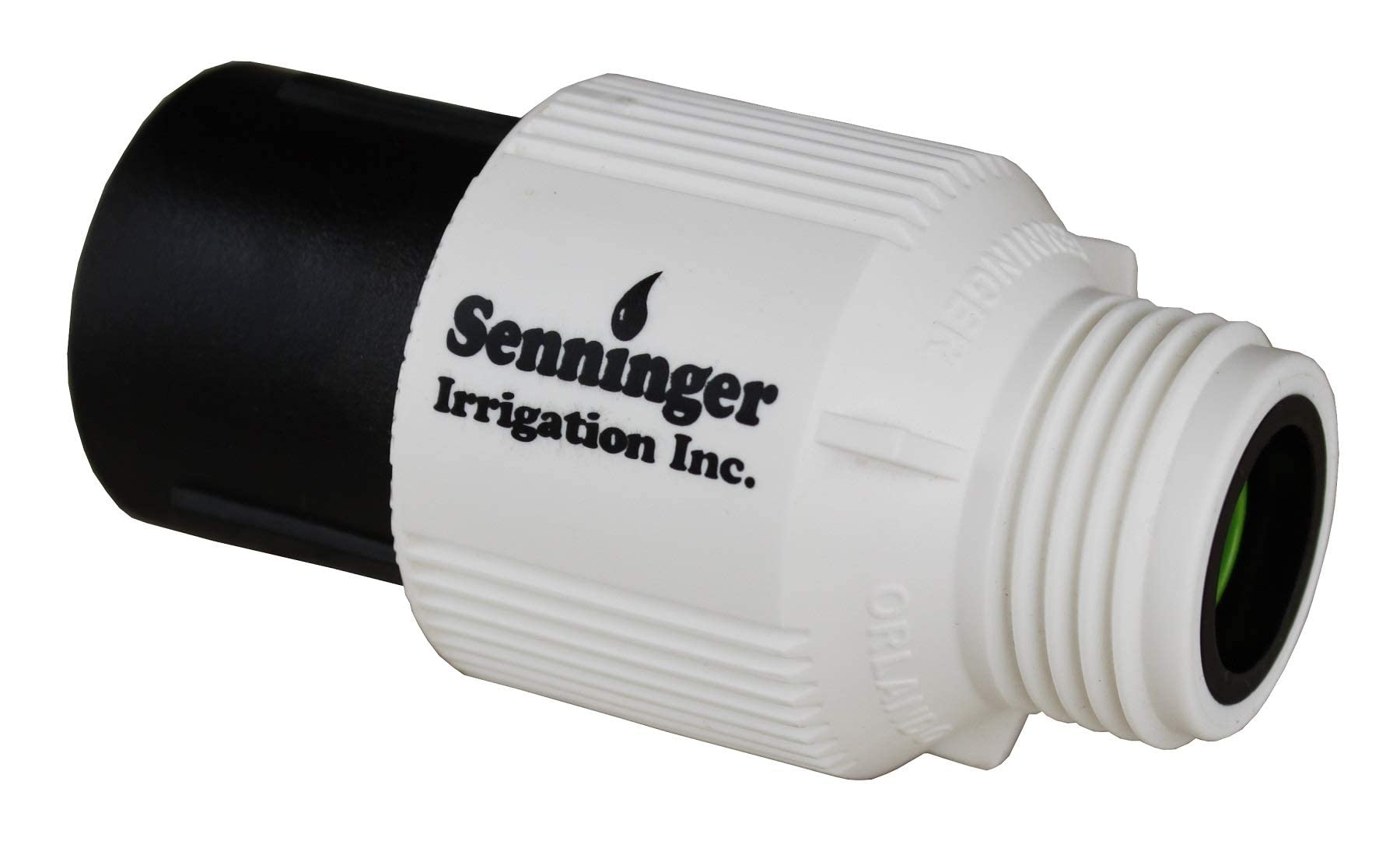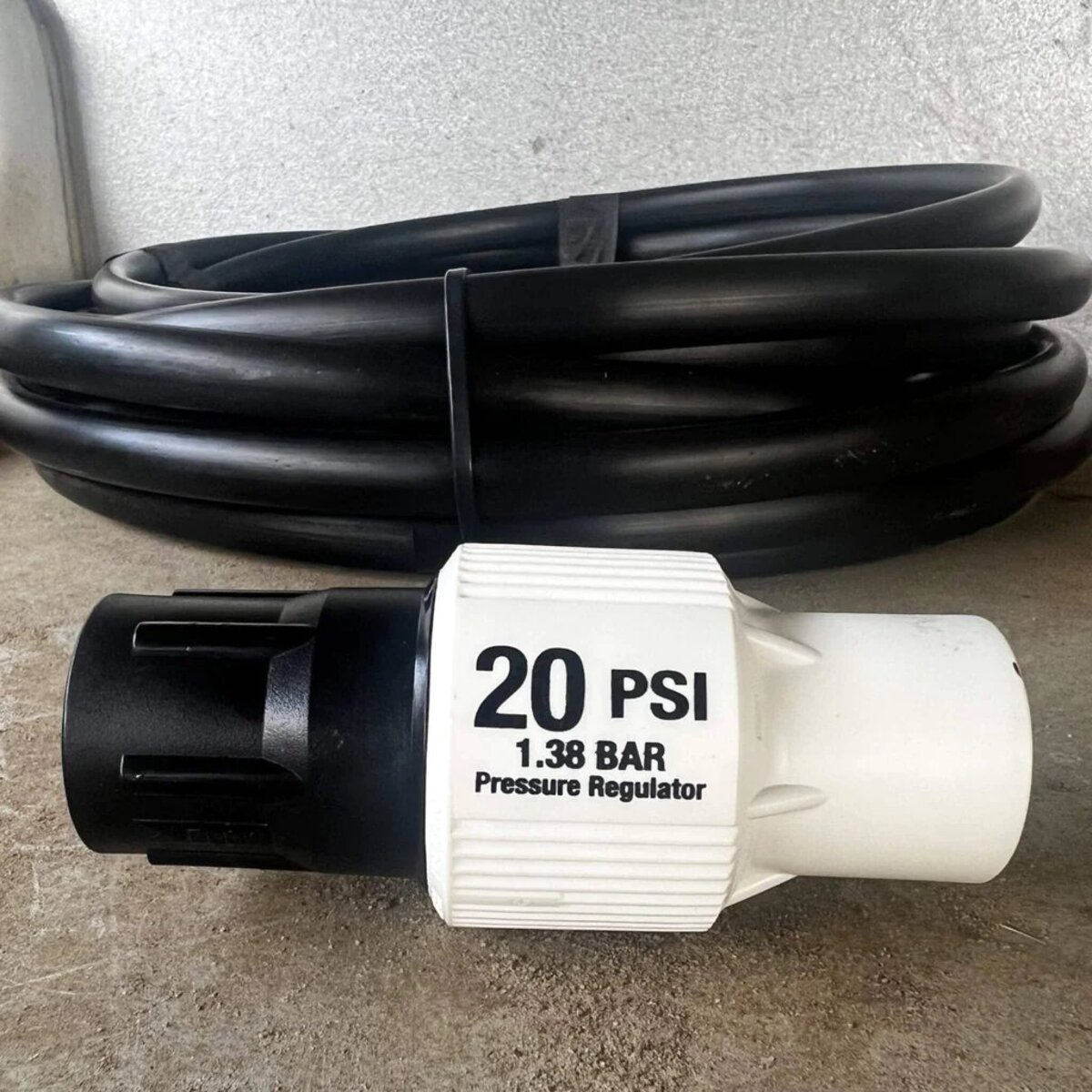Home>Gardening News and Trends>Latest News>Who Regulates Pesticides


Latest News
Who Regulates Pesticides
Modified: January 22, 2024
Stay up to date with the latest news on pesticide regulation and find out who regulates pesticides in your area.
(Many of the links in this article redirect to a specific reviewed product. Your purchase of these products through affiliate links helps to generate commission for Chicagolandgardening.com, at no extra cost. Learn more)
Table of Contents
Introduction
Pesticides play a crucial role in modern agriculture by controlling pests that can damage crops and threaten food security. However, their use also raises concerns about potential adverse effects on human health and the environment. To address these concerns, the regulation of pesticides is essential to ensure their safe and responsible use.
Regulations regarding pesticides vary from country to country, but they typically involve a combination of international and national organizations, as well as specific regulatory frameworks and laws. These regulations aim to protect human health, preserve the environment, and ensure the efficacy and sustainability of pesticide products.
In this article, we will explore the importance of pesticide regulation and examine the key organizations and agencies involved in regulating pesticides at both the international and national levels. We will also delve into the role of environmental protection agencies and health and safety agencies in monitoring and enforcing regulations. Additionally, we will examine the challenges that arise in regulating pesticides and the efforts made to overcome them.
By understanding the regulations surrounding pesticides and the entities responsible for their oversight, we can gain insight into the comprehensive framework designed to protect human welfare and the environment.
Overview of Pesticides
Pesticides are chemical substances specifically designed to control or eliminate pests, including insects, weeds, fungi, and rodents. They are widely used in agriculture to protect crops from damage and ensure high yields. Pesticides can also be utilized in residential areas, public spaces, and industrial settings to manage pests and maintain hygiene.
There are various types of pesticides available on the market, each tailored to target specific pests and achieve desired outcomes. Insecticides are used to combat insects, herbicides target weeds, fungicides control fungal diseases, and rodenticides are employed to manage rodent populations.
These chemical substances can be formulated as liquids, dusts, granules, or gases for ease of application. They work by interfering with the physiological processes of pests, disrupting their growth, reproduction, or ability to feed.
Pesticides have greatly contributed to increasing agricultural productivity by reducing crop losses caused by pests. They have also played a role in preventing the spread of diseases transmitted by pests. However, the use of pesticides comes with potential risks and challenges that need to be managed effectively.
Excessive or improper use of pesticides can lead to unintended consequences. These include environmental pollution, adverse effects on human health, ecosystem disruption, development of pesticide-resistant pests, and harm to non-target organisms such as beneficial insects, birds, and aquatic life.
To address these concerns, regulations have been established to ensure the safe and responsible use of pesticides. These regulations aim to strike a balance between the benefits of pest control and the potential risks associated with pesticide use.
Regulatory authorities set standards for the registration, labeling, storage, transportation, and application of pesticides. They also conduct risk assessments and establish limits on pesticide residues in food and water to protect human health. These measures help to mitigate the potential hazards associated with pesticide use.
It is important for users of pesticides, such as farmers, gardeners, and pest control professionals, to adhere to these regulations and employ best practices in pesticide application. This includes following recommended dosage rates, implementing integrated pest management strategies, using protective equipment, and adopting alternative pest control methods wherever possible.
By providing a comprehensive overview of pesticides and their regulation, we can better understand the challenges and importance of responsible pesticide use in today’s agriculture and pest management practices.
Importance of Regulation
The regulation of pesticides is of paramount importance to safeguard human health, protect the environment, and ensure the sustainability of agricultural practices. While pesticides provide valuable benefits in controlling pests and preserving crop yields, unchecked and irresponsible use can have detrimental consequences. Here are some key reasons why regulation is crucial:
1. Protecting Human Health: Pesticides have the potential to pose health risks to those who come into contact with them, including farmers, agricultural workers, and consumers. Regulations help ensure that pesticide products undergo rigorous testing to assess their toxicity and potential effects on human health. These measures include setting safety standards, establishing permissible exposure limits, and requiring appropriate labels with usage instructions and safety precautions.
2. Safeguarding the Environment: Pesticides can have unintended effects on the environment and non-target organisms. They can contaminate soil, water sources, and air, leading to adverse impacts on biodiversity and ecosystem health. Regulatory frameworks aim to minimize environmental contamination by evaluating the potential ecological risks associated with pesticide use and by imposing restrictions on the types and quantities of pesticides that can be applied.
3. Ensuring Sustainable Agriculture: The long-term sustainability of agriculture relies on responsible pesticide use. Overuse or misuse of pesticides can lead to the development of pesticide-resistant pests and the disruption of natural pest control mechanisms. Regulatory measures promote the adoption of integrated pest management (IPM) practices, which combine various pest control strategies and prioritize non-chemical methods whenever possible. This approach reduces reliance on pesticides and promotes sustainable farming practices.
4. Consumer Confidence: Regulation of pesticides provides consumers with confidence in the safety and quality of the food they consume. Regulations ensure that pesticide residues in food and water are within acceptable limits and do not pose a risk to human health. By setting standards and conducting regular monitoring, regulatory authorities help maintain consumer trust and ensure food safety.
5. Global Harmonization: Pesticide regulations often involve international cooperation and harmonization to ensure global consistency in safety standards. International organizations collaborate to establish guidelines and standards that facilitate the safe trade and use of pesticides across borders. This harmonization promotes transparency and facilitates the exchange of knowledge and best practices among countries.
Overall, the importance of pesticide regulation cannot be overstated. It plays a vital role in protecting human health, safeguarding the environment, promoting sustainable agriculture, maintaining consumer confidence, and facilitating international collaboration. Effective regulations ensure that pesticides are used responsibly, minimizing the potential risks associated with their use and helping to create a safer and more sustainable future.
International Organizations
Pesticide regulation is a global endeavor, with various international organizations playing a crucial role in setting standards, coordinating efforts, and promoting best practices. These organizations work together to address the challenges associated with pesticide use on a global scale. Here are some key international organizations involved in pesticide regulation:
1. Food and Agriculture Organization (FAO): As a specialized agency of the United Nations, the FAO plays a central role in international efforts to regulate pesticides. The FAO provides guidance on pesticide management, promotes integrated pest management (IPM) practices, and facilitates knowledge sharing among countries. It also collaborates with other organizations to develop international standards for pesticide residues in food and establish maximum residue limits (MRLs) to ensure food safety.
2. World Health Organization (WHO): Through its International Programme on Chemical Safety (IPCS), the WHO provides guidance on the evaluation of pesticide toxicology, risk assessment, and risk communication. The WHO collaborates with the FAO to develop globally harmonized pesticide classification systems, such as the WHO Recommended Classification of Pesticides by Hazard. These classifications help inform regulatory decisions and promote the safe handling, storage, and use of pesticides.
3. United Nations Environment Programme (UNEP): UNEP plays a vital role in addressing the environmental impacts of pesticide use. It collaborates with the FAO and other international organizations to develop guidelines and promote best management practices that reduce environmental contamination. UNEP also works to raise awareness about the ecological risks posed by pesticides and encourages the adoption of sustainable pest management strategies.
4. Organization for Economic Cooperation and Development (OECD): The OECD provides a platform for member countries to share their experiences and develop policies related to pesticide regulation and risk assessment. It fosters international collaboration and ensures that regulatory approaches are based on sound scientific principles. The OECD also conducts research and develops guidelines to address emerging issues in pesticide regulation, such as the assessment of endocrine-disrupting chemicals.
5. Rotterdam Convention: The Rotterdam Convention is a legally binding international agreement that aims to promote shared responsibilities in managing hazardous chemicals, including certain pesticides. The convention facilitates the exchange of information among countries about hazardous chemicals and assists parties in making informed decisions regarding the import and export of these substances. It enables countries to have prior informed consent and ensures that pesticide trade is conducted in a safe and responsible manner.
These international organizations, along with other regional and national bodies, work collaboratively to support the safe and sustainable use of pesticides worldwide. Through their efforts, they provide valuable guidance, promote best practices, and facilitate the exchange of knowledge and information among countries. By aligning their regulatory approaches, these organizations contribute to a harmonized global framework for pesticide regulation.
National Regulatory Agencies
While international organizations play a significant role in harmonizing pesticide regulation on a global scale, the primary responsibility for regulating pesticides lies with national regulatory agencies. These agencies are responsible for ensuring that pesticides used within their respective countries are safe, effective, and comply with established standards. Here are some key national regulatory agencies involved in pesticide regulation:
1. Environmental Protection Agency (EPA) – United States: The EPA is the primary regulatory agency in the United States responsible for pesticide regulation. It assesses the risks and benefits of pesticide products, registers pesticides for use, sets tolerances for pesticide residues in food, and establishes labeling requirements. The EPA conducts thorough evaluations of pesticide products to ensure they meet strict safety and efficacy standards before granting registration.
2. European Food Safety Authority (EFSA) – European Union: The EFSA plays a crucial role in pesticide regulation within the European Union (EU). It assesses the risks associated with pesticide use and provides scientific advice to inform regulatory decisions. The EFSA evaluates pesticide active substances and produces scientific opinions on their safety and efficacy. It also sets maximum residue levels (MRLs) for pesticides in food and conducts ongoing monitoring to ensure compliance.
3. Health Canada – Pest Management Regulatory Agency (PMRA): Health Canada’s PMRA is responsible for pesticide regulation in Canada. It assesses the health and environmental risks associated with pesticide use, registers pesticide products, and establishes MRLs for pesticide residues in food. The PMRA evaluates the efficacy and safety of pesticide products through rigorous scientific assessments, taking into account potential impacts on human health, non-target organisms, and the environment.
4. Australian Pesticides and Veterinary Medicines Authority (APVMA): The APVMA is the regulatory agency in Australia responsible for the assessment and registration of pesticides and veterinary medicines. It evaluates the risks and benefits of pesticide products, sets MRLs for pesticide residues, and oversees their safe use in agriculture and public health. The APVMA ensures that pesticides comply with stringent safety and efficacy criteria before they are allowed on the market.
5. Ministry of Agriculture – Agricultural Chemicals and Toxic Substances Control Division (ACTSD) – Japan: In Japan, the ACTSD is responsible for pesticide regulation. It evaluates the safety and effectiveness of pesticide products before granting registration and sets MRLs for pesticide residues. The ACTSD focuses on ensuring the responsible use of pesticides through risk assessments, residue monitoring, and the promotion of integrated pest management practices.
These national regulatory agencies, along with others around the world, strive to protect the health of humans and the environment by establishing robust regulatory frameworks for pesticide use. They conduct thorough evaluations, risk assessments, and monitoring to ensure that pesticides meet strict safety standards and are used responsibly within their respective countries.
Role of Environmental Protection Agencies
Environmental protection agencies play a crucial role in pesticide regulation by ensuring the safe and responsible use of pesticides to protect the environment and preserve ecological balance. These agencies are responsible for monitoring, enforcing, and promoting compliance with regulations related to pesticide use. Here are some key aspects of the role of environmental protection agencies in pesticide regulation:
1. Assessing Environmental Risks: Environmental protection agencies evaluate the potential risks that pesticides pose to ecosystems and non-target organisms. They assess the impact of pesticides on biodiversity, water quality, soil health, and the overall integrity of ecosystems. Through rigorous scientific assessments, these agencies determine whether a pesticide is likely to cause harm to the environment and establish measures to mitigate those risks.
2. Setting Environmental Standards: These agencies establish environmental standards and guidelines for pesticide use, ensuring that pesticide applications adhere to safe practices to minimize environmental contamination. This includes setting restrictions on pesticide application near water sources, sensitive habitats, and protected areas. By enforcing these standards, environmental protection agencies help prevent adverse ecological effects.
3. Monitoring Pesticide Use and Residues: Environmental protection agencies actively monitor pesticide use and residues in the environment, such as in water bodies, soil, and air. Through sampling and analysis, they assess the levels of pesticide residues and investigate instances of contamination. This monitoring helps identify areas of concern, track trends, and inform regulatory decisions relating to the use and management of pesticides.
4. Investigating Incidents and Complaints: In the event of pesticide-related incidents or complaints, environmental protection agencies play a key role in investigating and responding to these issues. They conduct inquiries, gather evidence, and take appropriate enforcement actions when violations of pesticide regulations are identified. By promptly addressing incidents and complaints, these agencies help ensure compliance and prevent future harm.
5. Promoting Integrated Pest Management (IPM): Environmental protection agencies actively promote the adoption of integrated pest management (IPM) practices. IPM emphasizes a holistic approach to pest management that integrates multiple strategies, including cultural, biological, and chemical methods, to minimize reliance on pesticides. By providing guidance, resources, and education on IPM, these agencies help farmers and pest control professionals implement sustainable and environmentally friendly pest management practices.
6. Public Outreach and Education: Environmental protection agencies play a vital role in raising awareness, educating the public, and disseminating information about pesticide risks and regulations. They conduct public outreach campaigns, organize training programs, and publish educational materials to promote responsible pesticide use among various stakeholders, such as farmers, gardeners, and consumers. By fostering a culture of awareness and understanding, these agencies empower individuals to make informed decisions and take steps to protect the environment.
Through their efforts, environmental protection agencies contribute to the overall goal of pesticide regulation by safeguarding the environment, minimizing ecological risks, and promoting sustainable pest management practices that protect both human and ecosystem health.
Role of Health and Safety Agencies
Health and safety agencies play a vital role in pesticide regulation by ensuring the protection of human health and promoting safe practices in the handling, storage, and use of pesticides. These agencies are responsible for evaluating the potential risks of pesticides to human health, establishing safety standards, and providing guidance on safe pesticide use. Here are some key aspects of the role of health and safety agencies in pesticide regulation:
1. Assessing Health Risks: Health and safety agencies conduct risk assessments to determine the potential adverse effects of pesticides on human health. They evaluate the toxicity of pesticide products, including acute and chronic effects, and assess exposure routes, such as dermal contact, inhalation, and ingestion. Through these assessments, health and safety agencies identify potential health hazards associated with pesticide use.
2. Setting Safety Standards: These agencies establish safety standards and guidelines for the registration, labeling, transportation, and storage of pesticides. Safety standards may include requirements for personal protective equipment (PPE), handling procedures, and storage conditions to mitigate risks and safeguard the health of individuals who come into contact with pesticides. By setting these standards, health and safety agencies help ensure the safe use of pesticides.
3. Promoting Occupational Safety: Health and safety agencies play a critical role in promoting occupational safety for workers involved in pesticide-related activities, such as farmers, agricultural workers, and pest control professionals. They develop guidelines and provide training on safe practices, PPE usage, and proper handling techniques to minimize exposure and protect workers’ health. By promoting occupational safety, these agencies aim to prevent pesticide-related illnesses and injuries.
4. Monitoring Pesticide Residues in Food: Health and safety agencies closely monitor pesticide residues in food to ensure they are within acceptable limits and do not pose a risk to human health. They establish maximum residue limits (MRLs) for pesticides in food and conduct regular surveillance and testing to verify compliance. This monitoring helps to ensure the safety of the food supply and protect consumers from potential health hazards.
5. Risk Communication and Public Health Education: Health and safety agencies play a crucial role in communicating risks associated with pesticide use to the public. They provide information on safe pesticide handling, promote the proper use of protective equipment, and educate the public on potential health risks. Through risk communication and public health education initiatives, these agencies empower individuals to make informed decisions and take measures to protect themselves and their families.
6. Collaborating with Healthcare Professionals: Health and safety agencies collaborate with healthcare professionals to enhance awareness and understanding of pesticide-related health issues. They provide resources, guidelines, and training materials to assist healthcare professionals in identifying and managing pesticide-related illnesses, as well as conducting research on the impacts of pesticide exposure on human health.
Through their efforts, health and safety agencies contribute to the overall goal of pesticide regulation by safeguarding human health, promoting safe handling practices, and ensuring that pesticide use does not pose unreasonable risks to individuals or communities.
Regulatory Frameworks and Laws
Regulatory frameworks and laws are the foundation of pesticide regulation, providing the legal framework within which the safe and responsible use of pesticides is managed. These frameworks and laws outline the requirements, processes, and standards that govern various aspects of pesticide regulation. Here are some key elements of regulatory frameworks and laws in pesticide regulation:
1. Registration and Licensing: Regulatory frameworks typically require pesticide products to undergo a registration process before they can be sold, distributed, or used. This process involves the submission of scientific data on the product’s efficacy, safety, and environmental impacts. Licensing requirements may also be in place for individuals or businesses involved in the sale, application, or handling of pesticides, ensuring that only qualified persons are authorized to handle these substances.
2. Labeling and Packaging Requirements: Regulatory frameworks mandate that pesticide products are appropriately labeled and packaged to provide users with the necessary information for safe and effective use. Labels include important details such as active ingredients, application rates, safety precautions, and environmental hazards. Clear and accurate labeling helps users understand the potential risks, proper handling procedures, and application instructions.
3. Residue Limits and MRLs: Regulatory frameworks establish maximum residue limits (MRLs) for pesticide residues in food and feed, determining the maximum allowable concentration of pesticide residues. MRLs are based on scientific assessments of the potential risks to consumers and are set to ensure that food and feed products are safe for consumption. These standards help protect public health and ensure the safety of the food supply chain.
4. Pesticide Use Restrictions: Regulatory frameworks may impose use restrictions on certain pesticides to prevent adverse effects on human health or the environment. These restrictions may include limitations on application methods, dosage rates, or specific prohibited uses in sensitive areas such as near water sources, schools, or residential areas. Use restrictions are critical in minimizing potential risks associated with pesticide use.
5. Data Requirements and Risk Assessments: Regulatory frameworks outline the data requirements and risk assessment processes that pesticide manufacturers and distributors must comply with. These requirements include providing scientific data on the product’s composition, physicochemical properties, toxicity, and environmental fate. Risk assessments evaluate the potential adverse effects of the pesticide on human health and the environment, assisting regulatory authorities in making informed decisions regarding product registration, use patterns, and safety measures.
6. Compliance and Enforcement: Regulatory frameworks establish mechanisms for compliance and enforcement to ensure that pesticide users, manufacturers, and distributors adhere to the established regulations. Compliance may be monitored through inspections, audits, and sampling programs, while enforcement may involve imposing penalties, issuing warnings, or revoking licenses for non-compliant actions. By enforcing regulations, regulatory authorities promote accountability and protect public health and the environment.
Overall, regulatory frameworks and laws provide the legal framework for pesticide regulation, setting the standards and procedures necessary to ensure the safe and responsible use of pesticides. These frameworks contribute to the protection of human health, the environment, and the sustainability of agricultural practices.
Monitoring and Enforcement
Efficient monitoring and enforcement mechanisms are essential components of pesticide regulation, ensuring that regulations and standards are followed and that the safe and responsible use of pesticides is upheld. Monitoring involves the systematic collection and analysis of data to assess compliance with pesticide regulations, while enforcement encompasses the actions taken to address non-compliance and ensure accountability. Here are key aspects of monitoring and enforcement in pesticide regulation:
1. Monitoring Pesticide Use: Monitoring involves the collection of data on pesticide use, such as the types of pesticides used, application rates, and the areas or crops where pesticides are applied. This information helps regulatory authorities evaluate patterns of pesticide use, assess potential risks, and identify areas that may require additional attention or support. Monitoring data can also reveal trends in pesticide usage and inform decision-making processes for policy development and targeted interventions.
2. Pesticide Residue Monitoring: Pesticide residue monitoring involves the analysis of samples from food, water, soil, and other environmental media to determine the presence and levels of pesticide residues. This monitoring ensures compliance with established maximum residue limits (MRLs) and helps identify situations where the safe use of pesticides may be compromised. Analytical techniques, such as chromatography and mass spectrometry, are utilized to accurately detect and quantify pesticide residues in various matrices.
3. Inspections and Audits: Regulatory agencies conduct inspections and audits to assess compliance with pesticide regulations. Inspections may involve site visits to pesticide manufacturers, distributors, or application sites to ensure adherence to labeling requirements, storage practices, and compliance with safety protocols. Audits may focus on the documentation and record-keeping practices of pesticide users and manufacturers to verify compliance with registration, labeling, and reporting requirements.
4. Penalties and Enforcement Actions: Non-compliance with pesticide regulations can result in various enforcement actions and penalties. Regulatory authorities have the power to issue warnings, fines, or suspension of licenses for violations. These enforcement actions serve as deterrents and encourage compliance with regulations. Repeat offenders may face more severe sanctions, including revocation of licenses, injunctions, or legal prosecution. Strong enforcement measures help maintain the integrity of pesticide regulation and protect public health and the environment.
5. Collaboration and Information Sharing: Effective monitoring and enforcement require collaboration and information sharing among regulatory agencies, industry stakeholders, and other relevant parties. Cooperation among different agencies at the local, regional, and national levels helps enhance monitoring efforts and strengthens enforcement capabilities. Sharing information on best practices, emerging issues, and non-compliant activities is crucial for identifying trends, improving compliance, and staying updated with evolving technologies and regulations.
6. Public Reporting and Transparency: Transparent reporting mechanisms are key to ensuring accountability and public trust. Regulatory agencies may publish reports or maintain publicly accessible databases that provide information on pesticide usage, residue monitoring results, and enforcement activities. Public reporting helps promote transparency, allows stakeholders to access information, and fosters informed decision-making by consumers and policymakers.
Through effective monitoring and enforcement, regulatory authorities can rigorously evaluate compliance with pesticide regulations, address non-compliance, and reinforce the importance of responsible pesticide use. These processes ensure greater protection of human health, the environment, and the sustainability of agricultural practices.
Challenges in Regulating Pesticides
Regulating pesticides poses significant challenges due to the complexity of balancing effective pest control with the need to protect human health, the environment, and sustainable agricultural practices. Here are some key challenges faced in the regulation of pesticides:
1. Evolving Science and Technology: The science and technology surrounding pesticides are constantly evolving, introducing new chemical formulations, application methods, and pest management approaches. Keeping up with these advancements and understanding their potential impacts on human health and the environment can be challenging for regulatory authorities. The rapid pace of innovation requires ongoing research, monitoring, and adaptation of regulatory frameworks to address emerging risks effectively.
2. Data Requirements and Availability: Robust risk assessments and regulatory decisions rely on substantial scientific data. However, acquiring comprehensive and high-quality data on the toxicity, environmental fate, and exposure routes of pesticides can be challenging. Some data may be proprietary, making it difficult for regulatory authorities to access and independently evaluate. Access to adequate and standardized data is crucial to making informed decisions and ensuring the safety and effectiveness of pesticide products.
3. Pesticide Resistance: Pesticide resistance, where pests develop genetic resistance to certain pesticides, poses a significant challenge in pest management. Overreliance on specific pesticides can accelerate the development of resistance, rendering these chemicals less effective over time. Regulators must address this challenge by promoting integrated pest management (IPM) practices that emphasize diverse pest control methods and reduce dependency on chemical pesticides.
4. International Harmonization: Achieving international harmonization in pesticide regulation is complex due to the differing regulatory frameworks, cultural practices, and socioeconomic contexts among countries. Harmonizing standards, maximum residue limits, and other regulatory requirements is a constant challenge. Collaborative efforts among international organizations and regulatory bodies are necessary to align approaches, share information, and promote consistent regulatory standards globally.
5. Enforcement and Compliance: Ensuring compliance with pesticide regulations is a significant challenge. Monitoring and enforcing widespread compliance across diverse agricultural practices, the pest control industry, and individual users can be resource-intensive. Limited resources, varying levels of awareness, and the prevalence of illegal or unregistered pesticide products pose challenges in achieving high levels of compliance. Effective enforcement strategies need to be implemented, including inspections, audits, penalties, and public education campaigns.
6. Balancing Benefits and Risks: Striking the right balance between reaping the benefits of pest control while minimizing potential risks is a constant challenge. Pesticides play a vital role in maintaining food security and preventing disease transmission, but they may also have unintended environmental and health consequences. Regulatory authorities must carefully evaluate and manage the risks associated with pesticide use, ensuring that allowable exposure levels and safety standards adequately protect human health and the environment.
By recognizing these challenges, regulatory authorities can work towards addressing them through ongoing research, stakeholder engagement, capacity building, and the continuous evaluation and improvement of regulatory frameworks. By doing so, they can promote the safe and responsible use of pesticides, protect human health and the environment, and support sustainable agricultural practices.
Conclusion
Regulating pesticides is a complex task that requires a delicate balance between maximizing the benefits of pest control and minimizing the potential risks to human health and the environment. Through international organizations, national regulatory agencies, and the involvement of environmental protection and health and safety agencies, comprehensive frameworks have been established to monitor and enforce pesticide regulations.
The importance of pesticide regulation cannot be overstated. It ensures the protection of human health by setting safety standards, evaluating risks, and establishing maximum residue limits in food. Environmental protection agencies play a crucial role in safeguarding the environment by assessing ecological risks, setting environmental standards, and promoting sustainable pest management practices. Health and safety agencies focus on protecting individuals by evaluating health risks, setting safety standards, and promoting safe pesticide handling and use.
Monitoring and enforcement are vital components of pesticide regulation, ensuring compliance with regulations, detecting non-compliance, and addressing it through penalties and enforcement actions. International harmonization efforts seek to align regulatory approaches and promote consistent standards across countries. However, challenges such as evolving science and technology, data availability, pesticide resistance, enforcement, and balancing benefits and risks persist in the regulation of pesticides.
By addressing these challenges and maintaining rigorous regulatory frameworks, pesticide regulation can continue to evolve and adapt to emerging risks and advancements in pest control methods. Ongoing research, information sharing, stakeholder collaboration, and public education are essential to overcoming these challenges and ensuring the safe and responsible use of pesticides.
Ultimately, pesticide regulation aims to safeguard human health, protect the environment, and promote sustainable agricultural practices. By working collectively at the international, national, and local levels, regulatory authorities and stakeholders can foster a safer and more sustainable future for pest management and contribute to the well-being of individuals and ecosystems worldwide.









